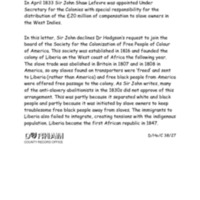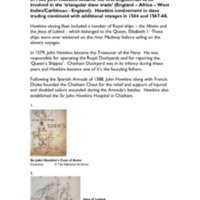
John A.
There are an estimated 136,000 people living on conditions of modern slavery un the United Kingdom (Global Slavery Index 2018). According to the 2017 annual figures provided by the National Crime Agency, 5, 145 potential victims of modern slavery were referred through the National Referral Mechanism in 2017, of whom 2,454 were female, 2688 were male and 3 were transgender, with 41% of all referrals being children at the time of exploitation. People are subjected to slavery in the UK in the form of domestic servitude, labour exploitation, organ harvesting and sexual exploitation, with the largest number of potential victims originating from Albania, China, Vietnam and Nigeria. This data however does not consider the unknown numbers of victims that are not reported. After losing his job due to his sexual orientation and the death of his mother, John fled Uganda after his family blamed him for her death. John travelled to Edinburgh with a friend who told him he could get a good job and have a better future. However, upon arrival his passport was confiscated and he was locked in a room for a month. John ran away after one of the men keeping him tried to force him to perform a sexual act. John was referred to Migrant Help who assisted in obtaining him refugee status.

Exhibition to mark the bicentenary of the 1807 Act
Durham Record Office held an exhibition of its original documents relating to slavery, the slave trade and abolition. These include reports, maps, and a number of letters, from, for example, Sir John Shaw Lefevre (Under Secretary for the Colonies in 1833), the abolitionist James Stephen and the prominent Quaker activist Josiah Forster. The exhibition was displayed in the Record Office and toured several venues in the region. It was also used for inspiration by members of Jackass Youth Theatre, who produced the play Sharp Practice after visiting the Record Office and consulting some of the original documents on display.

Freedom 1807: The Chatham Dockyard Story
The Historic Dockyard Chatham opened a new exhibition in 2007 to look at the history of Chatham in the context of the transatlantic slave trade. The exhibition examined dockyard ‘founder’ John Hawkins - the leader of the first English expedition to transport West African people to the Americas - the work of Chatham-built ships in policing the slave trade post-abolition, and the hidden history of people from ethnic minorities who served in the Royal Navy or worked in the naval dockyard, from the 18th century to the post-Second World War period. The exhibition also looked at Chatham's links to Indian shipbuilding. HMS Gannet (1878), preserved alongside two other historic warships at The Historic Dockyard, is the only surviving British warship to have taken part in the suppression of the slave trade off the coast Africa during the 19th century. Between 1885 and 1888 Gannet undertook anti-slavery patrols in the Red Sea, intercepting Arab slave traders operating off the East Coast of Africa, around the Gulf and the Indian Ocean.